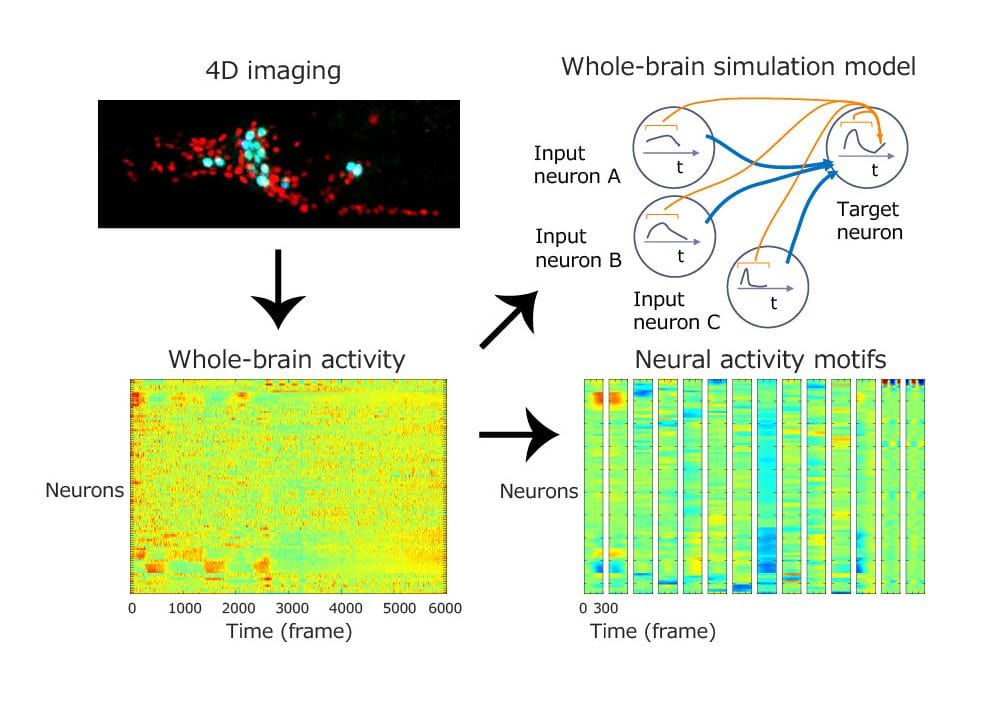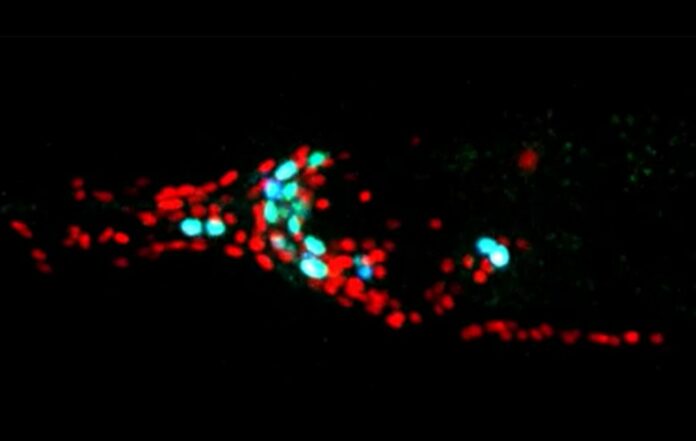Worms of a Different Mind: Scientists explain how variations in “whole-brain” activity develop in roundworms.
Unlocking the secrets of roundworm brains: Scientists reveal how noisy neural activity shapes individuality in Caenorhabditis elegans. Discover the surprising findings of joint research by Yu Toyoshima and Yuichi Iino, exploring whole-brain dynamics and the role of noise. Published in PLOS Computational Biology.
Yu Toyoshima and Yuichi Iino of the University of Tokyo conducted a joint study that proved unique variations in roundworm whole-brain activity while effectively extracting commonality.
Additionally, the team discovered that the addition of so-called “noise,” or probabilistic features, improves the accuracy of computer simulations based on the whole-brain activity of roundworms.
The results were reported in the journal PLOS Computational Biology.
Neuroscientists hold a particular fascination for the roundworm Caenorhabditis elegans due to its meticulously mapped 302 neurons, rendering it a darling of research. This mapping presents an unparalleled chance to delve into the neural mechanisms at a systemic level.
While strides have been made in uncovering the diverse states and patterns of individual neurons and the intricate assemblies they compose, the genesis of these states and patterns remains a relatively uncharted domain.
First, the researchers analyzed the neuronal activity of each cell that makes up a rudimentary brain in the roundworms’ heads. To do this, the worms were put on a microfluidic chip, a microscopic mechanism intended to allow worms to “wiggle” backward and forth while remaining inside the field of view of the target.

They then used a confocal microscope to video how the neurons responded to salt concentration variations.
“Although we were able to extract neural “motifs” common among individuals,” points out Iino, “we were surprised to find large individual differences in neural activity. Information from sensory neurons is transmitted to “command” neurons through multiple paths to control behavior. Since the neural circuits of C. elegans are thought to be relatively well conserved among individuals, we had assumed that there would be little variation in these paths among individuals. But remarkably, we found the opposite.”
The data obtained from these “films” of roundworm brains was subsequently utilized to generate computer models of roundworm brains. However, the earliest simulations using purely deterministic factors produced decreasing “neural” activity. By adding “noise” to the models, the team was able to accurately reflect the roundworms’ whole brain activity.
They were able to not only measure the level of connection between neurons, but also show that “noise” is necessary for brain activity. This mathematical model may also be used to examine neural activity in circumstances when full connectome data is not yet available.
Iino says, “We originally designed this study to investigate the neural mechanisms involved when roundworms are attracted to salt.
“However, to measure whole-brain activity, we needed to keep the roundworms in a narrow channel so that they would not move away.
“We would like to improve the microscope so that we can track freely moving roundworms and analyze whole-brain activity while they are being attracted to salt.”
Source: 10.1371/journal.pcbi.1011848
Image Credit: Toyoshima et al 2024
